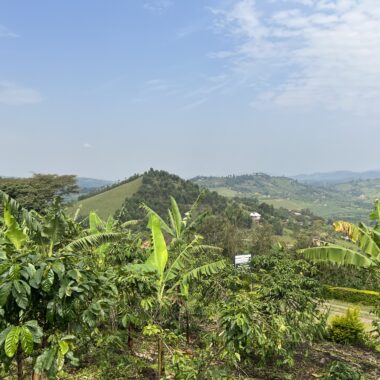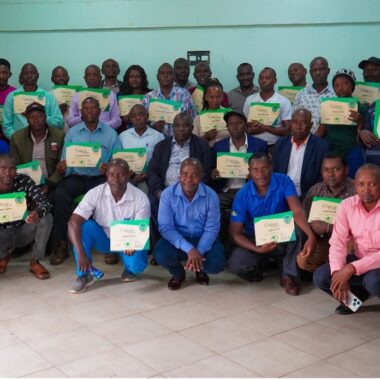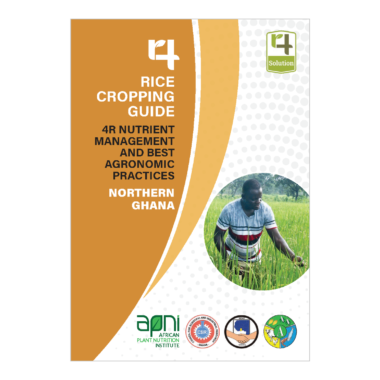Contributor: Sara Lamsili, Jr Project Communications Manager
Durum wheat and the culture/climate nexus
Wheat’s versatility and affordability ranks it as one of top staple foods in the world. Beyond being a fundamental source of carbohydrates, wheat is also rich in fiber and contains essential vitamins and minerals such as zinc, iron and magnesium, all vital for healthy and steady mental and physical development (Shewry & Hey, 2015).
In Tunisia, as part of the Mediterranean basin, durum wheat farming has long been a part of a cultural heritage passed down from one generation to another. Primarily a rainfed crop, durum is well-adapted to the either the humid to sub-humid zone in the north or the semi-arid central steppe. The crop continues to play an important role in securing socio-economic stability within the region. Durum-based foods are popular worldwide but are widely consumed in Mediterranean and Middle Eastern cuisines as couscous, pasta, bulgur and certain types of bread (Moayedi et al., 2021).
Nitrogen (N) is the most important nutrient for durum wheat production since it is often the most limiting for high yielding, profitable crop production. How N fertilizer is managed often plays an essential role in determining the marketability of the crop since the availability of N during the growing season has a strong influence on key grain quality traits such as protein content, dough quality and processing characteristics (Yang et al., 2022).
Embracing technology and N fertilizers
If improperly applied, N fertilizer can be susceptible to losses during its conversion to plant available forms. Ensuring that enough plant available N is provided to the crop through fertilizer and soil N reserves while also guarding against excessive loss to the environment is key, but this is often a challenge for farmers to achieve. This is where precision agriculture (PA) comes into play. The aim of PA is to manage for variations in nutrient availability through improved agronomic practice at field-scale.
Under APNI’s support through the African Plant Nutrition Research Fund (APNRF), the National Institute of Field Crops (INGC) in Tunisia is working on a project (APNRF-Tunisia Wheat) to develop satellite image-based models for N uptake in durum. Project lead and Chief Engineer at INGC, Dr. Mouna Mechri, is using this work as the basis for an interactive decision support system (DSS) called CropSAT, which is used to optimize N recommendations for wheat and assist farmers in Tunisia. CropSAT uses remotely-sensed Sentinel-2 satellite imagery that provides free vegetation index maps for various PA applications. These maps can be downloaded in different formats for use with different machinery, printed for manual use, or used on smartphones and tablets to support advisory discussions.
Well-adjusted N levels can improve efficiency and lead to higher profits while minimizing the negative environmental impact of nutrient application. CropSAT, initially developed by the Swedish University of Agricultural Sciences (SLU), has been continuously improved through a partnership between SLU, private companies, and the Swedish Board of Agriculture. One of its key uses is for variable rate application (VRA) of agricultural inputs like fertilizers, pesticides, and growth regulators. In regions with limited water availability, such as arid and semi-arid zones, optimal N use and crop growth can be hindered by insufficient soil moisture. The research that is underway in Tunisia in collaboration with SLU, INGC, and the National Agronomic Institute of Tunisia (INAT), and APNI will assess the feasibility of implementing systems like CropSAT in arid and semi-arid areas to improve fertilizer and irrigation water management. Proximal (close-up) sensing, collected with hand-held devices in the field, measure N concentrations in wheat plant tissue at key times during the crop season.
These measurements help Dr. Mechri better understand the site-specific nature of N uptake by durum crops, which is the first step to guiding N application rates through the principles of precision nutrient management. At the same time, Dr. Mechri is using what she is learning in individual farm fields to expand the scope to reach a much larger scale. The ground-truthed data is being linked to Sentinel-2 images and maps to explore the potential of applying the insights gained from close-up sensors to much larger areas, thereby benefiting a greater number of durum farmers. Wider collaboration is also planned to develop and disseminate the DSS to empower the agricultural sector in Africa and the Middle East with PA techniques to improve food production.
Benefits and future prospects
Using the right amount of fertilizers allow farmers to save money and reduce waste. Beyond this aspect, precision nutrient management can generate higher yields of greater quality that increase revenues and secure a sustainable income. Another silver lining of this project lies in its scalability. The workflows developed in this model can be adapted for other crops and regions and perhaps countries. Moreover, precision nutrient management plays a major role in sustainable intensification as it helps to minimize the risks for environmental harm. As investment in science, technology and agronomy increase, the sensor and satellite will get even better.
In conclusion, the integration of PA using proximal and remote sensing technologies represents a transformative approach for durum wheat farming in Tunisia. By optimizing N use, this project not only aims to enhance crop yields and improve the economic stability of farmers but also addresses the concerns associated with N fertilizer use. The innovative methodologies developed here have the potential to be adapted for other crops and regions. As Tunisia blends its rich agricultural heritage with cutting-edge technology, it sets a powerful example of how tradition and innovation can work hand in hand to secure a more productive and environmentally friendly future.

Mouna Mechri (INGC), Omran Alshihabi (SLU) and Issam Nouiri (INAT) are discussing crop status maps in their collaboration project, Tunisia (photo: Kristin Persson, SLU)

Screenshot from CropSAT, showing a vegetation index map of a field near Boukaslan, Tunisia, 28/Jan./2023 (Photo: Omran Alshihabi)
References
Moayedi, S., Elias, E. M., & Manthey, F. A. (2021). Effect of weather on grain quality traits of durum wheat grown in the northern plains of USA. American Journal of Plant Sciences, 12(12), 1894–1911. https://doi.org/10.4236/ajps.2021.1212131
Shewry, P. R., & Hey, S. J. (2015). The contribution of wheat to human diet and health. Food and Energy Security, 4(3), 178–202. https://doi.org/10.1002/fes3.64
Yang, T., Zhou, Q., Wang, Q., Wang, X., Cai, J., Huang, M., & Jiang, D. (2022). Effects of Nitrogen Fertilizer on Quality Characteristics of Wheat with the Absence of Different Individual High-Molecular-Weight Glutenin Subunits (HMW-GSs). International Journal of Molecular Sciences, 23(4), 2178. https://doi.org/10.3390/ijms23042178






